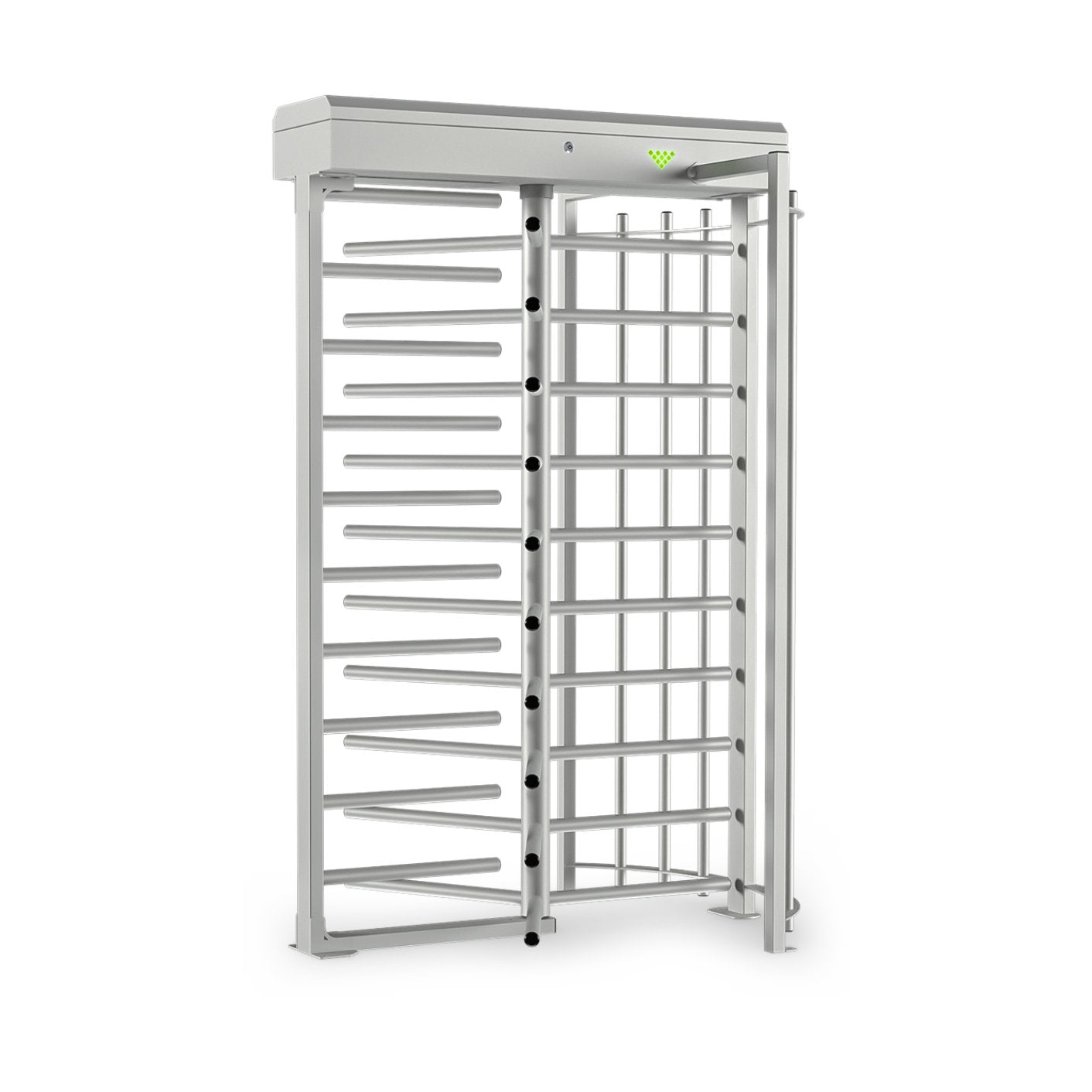Access control is a critical aspect of security for many facilities, ranging from office buildings and sports arenas to industrial sites. With numerous access control systems available, selecting the right one can be a challenge.
Full-height turnstiles are a popular choice for high-security environments, but how do they compare to other systems like swing gates, speed gates, or electronic access control systems? Follow along and explore the key differences between full-height turnstiles and other access control options, helping you decide which is best suited for your facility's specific needs.
Full-Height Turnstiles: The Ultimate in Physical Security

Full-height turnstiles are designed to provide maximum security by creating a barrier that spans from floor to ceiling. They function as a revolving door, allowing only one person to pass through at a time. These turnstiles are ideal for areas that require stringent access control, such as stadiums, construction sites, and secure perimeters of industrial facilities. One of the main advantages of full-height turnstiles is their ability to prevent tailgating and unauthorized entry, which is often a concern in high-traffic environments.
Integration With Modern Systems
The rugged construction of full-height turnstiles, usually made of stainless steel or other durable materials, ensures they can withstand heavy usage and harsh weather conditions. They can be integrated with various access control technologies, such as RFID card readers, biometric scanners, or keypad systems, to further enhance security. This combination of physical barriers and electronic access verification makes full-height turnstiles one of the most effective solutions for controlling entry points. However, they can take up more space than other access control systems and may not be suitable for facilities where a faster flow of people is necessary.
Comparing to Other Access Control Systems
When compared to other access control systems, such as swing gates, speed gates, and electronic access systems, full-height turnstiles offer distinct advantages and some limitations. For instance, swing gates and speed gates are typically used in environments where rapid, easy access is required, like office buildings, transport hubs, or gyms. These gates are designed to allow for a smoother, faster passage, often accommodating multiple people entering simultaneously. While they can be integrated with access control technologies, they do not provide the same level of physical security as full-height turnstiles. Tailgating can still occur, and these gates are generally not suitable for high-security areas where strict one-person-at-a-time access is needed.
The Advantage of Physical Barriers
Electronic access systems, such as keycard or biometric readers, are widely used in modern facilities to restrict access to specific areas. These systems can log entry and exit, providing valuable data for security management. However, they rely on the presence of physical barriers, like doors or gates, to enforce access control. Without a physical restriction like a full-height turnstile, they can be more vulnerable to unauthorized entry methods, such as following an authorized user through an open door. While electronic access systems excel in environments where monitoring and flexible access control are needed, they may not offer the same robust physical deterrent as full-height turnstiles.
Conclusion - Full-Height Turnstiles Are the Pinnacle of Physical Security
Full-height turnstiles provide unmatched physical security, making them an excellent choice for facilities that require strict access control and the prevention of unauthorized entry. They are particularly well-suited for outdoor environments, high-traffic security checkpoints, and areas where a single-file entry is crucial. However, they may not be the best fit for facilities where quick and unrestricted access is a priority, such as office buildings or public transportation hubs.
On the other hand, other access control systems like swing gates, speed gates, and electronic access controls offer more flexibility and a faster flow of people, albeit with varying levels of security. When choosing the right access control system for your facility, consider factors such as the level of security required, the nature of foot traffic, and space availability. By carefully evaluating your facility’s unique needs, you can select the access control system that best balances security, convenience, and efficiency.





